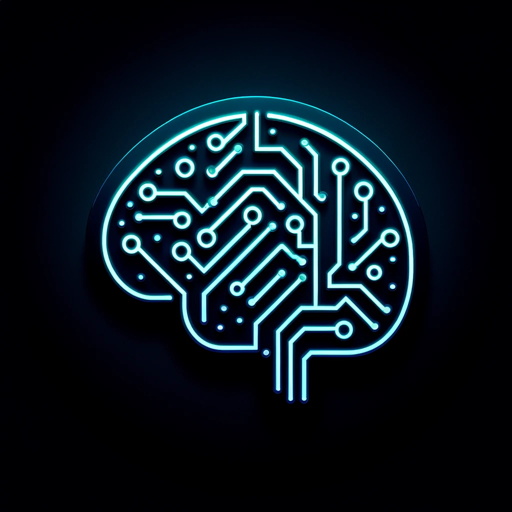Theory of Computation-AI-driven computational theory tool.
AI-powered insights into computation theory.
Expert in Theory of Computation
Explain the Turing machine.
What is P vs NP?
Describe automata theory.
How does computational complexity work?
Related Tools

Programming Genius
Delivers complete solutions to any programming question, no matter the language and the complexity.

Algorithm Ace
Expert in advanced algorithms and data structures, providing clear and detailed explanations.

Math Proof GPT
Solve complex mathematical proofs with this GPT trained on thousands of papers

Computer Science GPT
Expert in computer science
Discrete Mathematics
Precision-focused Language Model for Discrete Mathematics, ensuring unmatched accuracy and error avoidance.

Graph Theory
Friendly and patient guide in Graph Theory.
20.0 / 5 (200 votes)
Introduction to the Theory of Computation
The Theory of Computation is a foundational area of computer science that studies the abstract and mathematical principles of computation. Its primary goal is to understand what problems can be solved by computers (computability), how efficiently these problems can be solved (complexity), and what constitutes a valid computation (automata theory). By exploring these topics, the Theory of Computation provides the theoretical underpinnings for many aspects of computer science, including algorithm design, programming languages, and cryptography. One example of its application is in understanding the limits of what computers can do. For instance, the Halting Problem, a well-known concept in computability theory, illustrates that there are problems that no computer algorithm can solve. This insight helps computer scientists design systems with a clear understanding of their limitations. Another key aspect is the study of formal languages and automata, which involves designing abstract machines (like finite automata and Turing machines) that can recognize patterns or compute functions. For example, regular expressions, used in search engines and text processing, are based on concepts from automata theory.

Main Functions of the Theory of Computation
Computability Theory
Example
Determining whether a given problem, such as the Halting Problem, can be solved by any algorithm.
Scenario
In software verification, computability theory helps developers understand which aspects of a program's behavior can be fully verified by automated tools, guiding the development of reliable systems.
Complexity Theory
Example
Classifying problems based on their computational difficulty, such as distinguishing between P and NP problems.
Scenario
In optimization problems, such as finding the shortest route for delivery trucks (Traveling Salesman Problem), complexity theory helps determine whether an efficient solution is possible or if heuristic methods are needed.
Automata Theory
Example
Designing finite automata to recognize regular languages, which can be implemented in lexical analyzers for compilers.
Scenario
In text processing, automata theory is used to implement search algorithms that recognize patterns in text, such as validating email addresses or extracting information from documents.
Ideal Users of the Theory of Computation
Computer Science Researchers
Researchers in theoretical computer science benefit from the Theory of Computation as it provides the foundational concepts needed to explore advanced topics like quantum computing, cryptographic protocols, and the limits of machine learning algorithms.
Software Engineers and Developers
Software engineers who work on algorithm design, system optimization, or programming language development can use concepts from the Theory of Computation to create more efficient, reliable, and theoretically sound software solutions.

Guidelines for Using Theory of Computation
Visit aichatonline.org for a free trial without login.
Begin by visiting aichatonline.org, where you can access a free trial without needing to log in or subscribe to ChatGPT Plus. This allows you to explore the Theory of Computation features effortlessly.
Understand the prerequisites.
Familiarize yourself with the basic concepts of automata theory, computability, and complexity theory. A solid grasp of these fundamentals will help you maximize the benefits of the tool.
Identify your use case.
Determine the specific aspect of Theory of Computation you want to explore—whether it's academic research, problem-solving, or theoretical analysis. This clarity will help you focus your queries effectively.
Input detailed questions or problems.
Enter specific, detailed queries related to the Theory of Computation. The more precise your input, the better the tool can assist you in understanding or solving complex problems.
Review and refine your approach.
After receiving an answer, review the explanation carefully. Use the insights to deepen your understanding, and if necessary, refine your questions to explore further or clarify doubts.
Try other advanced and practical GPTs
Music Theory
AI-powered music theory insights.

Graph Theory
AI-powered graph theory for real-world solutions.

DnDGPT - Full Canvas Battle Map Maker
AI-powered full-canvas battle map creator.

Design Sequence Diagram & Implement
AI-powered sequence diagrams and API code generation.

Plagarism Remover
AI-powered Rephrasing for Plagiarism-free Content

Watermark Remover
AI-Powered Image Watermark Remover.

Meeting Summary and Action Item Specialist
AI-powered summaries and action items in seconds.

Hand-drawn illustration GPT
AI-powered doodle creator for everyone

Progress Note
AI-powered therapy note generation tool.

Scientific Article Summarizer
AI-powered tool for precise scientific summaries.

Scientific Writing Assistant
Elevate your scientific writing with AI.

Scientific Paper Writer
AI-Powered Writing for Scientific Excellence

- Academic Research
- Problem-Solving
- Algorithm Design
- Theoretical Analysis
- Technical Education
Common Q&A on Theory of Computation
What is the Theory of Computation?
The Theory of Computation is a branch of computer science that deals with how efficiently problems can be solved on a model of computation, using algorithms. It explores the limits of what can be computed, the resources needed for computation, and how problems can be classified based on their computational difficulty.
How does automata theory fit into the Theory of Computation?
Automata theory is a foundational area within the Theory of Computation that studies abstract machines (automata) and the problems they can solve. It helps in understanding the structure of computational problems and the nature of the algorithms that can be used to solve them.
What is the significance of complexity theory?
Complexity theory, a crucial part of the Theory of Computation, categorizes problems based on their computational difficulty. It helps determine the resources required (such as time and space) to solve a problem, and identifies whether efficient algorithms exist for certain classes of problems.
Can Theory of Computation help in algorithm design?
Yes, the Theory of Computation provides the theoretical framework for understanding the capabilities and limitations of algorithms. It guides the design of efficient algorithms by classifying problems into categories, such as P, NP, and NP-complete, and by analyzing the resources needed to solve these problems.
How is the Theory of Computation applied in real-world scenarios?
In practical applications, the Theory of Computation informs fields like cryptography, compiler design, artificial intelligence, and network security. It helps in designing secure systems, optimizing processes, and understanding the theoretical limits of computation, which are crucial for innovation in technology.